This article first appeared on My Travelogue by Bhushavali
On our Day 3 in Frankfurt, we headed to Lorsch. Lorsch is special because, not only does the abbey there listed as one of the UNESCO World Heritage Sites in Germany, but this entire region, Bergstraße-Odenwald is listed as one of the UNESCO Global GeoPark network!
LORSCH ABBEY
To begin with the town of Lorsch is beautiful! Its one of those quaint, charming, little, authentic German towns which still has the old world charm with its old buildings and quiet lifestyle! A quick walk from the railway station to the Lorsch Abbey gives the perfect intro to this idyllic town.
The Lorsch Abbey is one of the most important monasteries of Carolingian Empire. Now, what is Carolingian Empire? That's the empire whose first important Emperor was King Charlemagne. Lorsch Abbey is the last resting place of many family members of Charlemagne.
The earliest mention of Lorsch Abbey is from 764 CE built by Rupertiner Williswinda and their son, district count Cancor for St.Peter & St.Paul. It was then passed on archbishop Chrodegang of Metz. So suddenly it became popular and richest in the east of Rhine. The Benedictine Abbey was granted imperial immediacy in 772 CE however lost it in 1232 CE. The title of the provost of Lorsch itself was disintegrated in 1556 CE and then slowly the entire abbey fell to ruins.
Since the last 50 years, excavations and research are happening to understand the place better and in 1991, Abbey and Altenmünster of Lorsch were listed together as UNESCO World Heritage Sites in Germany.
The most fascinating feature in the entire group of monuments for me, were the Carolingian era frescoes in the first floor of King's Hall (Gate House or Königshalle). The inner chambers can be accessed only by guided tour which happens only in German language. Though I didn't understand one word that the guide said, I still had to opt for the tour because that's the only way to see the frescoes atop!
While it is called today as a gate house, its true function is still unknown for the lack of archaeological proof. Possibilities include 'reception room for important people' or 'trial room' etc. The current structure belongs to the 9th C CE (restored in 1935) and the earliest frescoes also belong to the same period. The polychrome exteriors is a striking feature of the same era. The geometric pattern achieved by colored bricks is an absolute thing of beauty and the perfect example of the architecture of Carolingian Era.
The frescoes inside have actually been painted over & over and research reveals that there are atleast 4 layers of plasters with frescoes in there. A flight of spiral staircase leads to the first floor of the King's Hall which has this arched, wooden roof. The frescoes are mostly intact in just the curved part of the wall below the roof on either sides. In rest of the places, the frescoes are mostly gone.
The oldest, painted in the Carolingian era, soon after the place was built, are some simple figures with inscriptions. The next layer was painted around the same era, and is of the columns & pillars depicting the architectural elements. The 3rd layer is of the angels done a couple centuries later and the latest layer is of frescoes depicting scenes from the life of Mary the Mother of God, done during the medieval times.
Earliest Frescoes of Carolingian Era
Frescoes of Architectural Elements around same period
Frescoes of Angels made a couple centuries later
Medieval frescoes depicting Life of Mary
As I just mentioned, the King's Hall is (assumed as) just the gateway of the monastery wall. The actual abbey building is located behind it. There is one hall, that's still standing and apart from that, all that you can see today is just the plan on the floor! Its completely in ruins.
There are portions of the Monastery wall that still exist as well (about 500m & 3-4m tall). Beside the King's Hall is the Exhibition Depot Tithe Barn which was once a cellar cum granary. That is all! Just behind the Exhibition Depot (barn) is a small herb garden called Lorsch Pharmacopeia Herb Garden, which has more than 200 medicinal plants.
Our final stop was the Altenmunster. This is located a bit away from the Lorsch Abbey ruins and the short walk crosses through Laboratory Of Experimental Archaeology. This reminded me of Bokrijk Open-air museum in Belgium. The concept is similar - to recreate a society as it was, a few centuries ago, though Lorsch pushes it further back by few more centuries to the times of Emperor Charlemagne. The houses and other buildings have been built using the archeological evidences of how construction happened in the Carolingian Era like pit houses, timber houses etc. Obviously medieval lifestyle would mean cattle are an inherent part of it, so yes, there are barns here as well as cattle. Often there are demos or workshops to help visitors get an hands-on experience of medieval things to do. While it is possible to just glance the entire space on the way to Altenmunster, going inside the Laboratory Of Experimental Archaeology is possible only by a guided tour. Unfortunately since there's one every 2 hours on weekdays, it was too long a waiting time for us and we had to skip it.
Finally we were almost at Altenmünster Abbey ruins. This area is picturesque just beside river Weschnitz, a small tributary of the mighty river Rhine. This was founded in 764 CE by Rupert Family. Just like the Lorsch Abbey, this too is in complete ruins and there's practically nothing here currently, except the floor plan.
BERGSTRASSE-ODENWALD UNESCO GLOBAL GEOPARK
My original plan was to spend half a day at Lorsch Abbey and rest half walking one of the 2 trails located very close to Lorsch that goes through Bergstraße-Odenwald UNESCO Global Geopark. The geopark is humongous & covers an area of 3,500 km² between the Rhine, the Bergstraße, the Odenwald and the Main and Neckar rivers. But unfortunately we overshot the time we spent at Lorsch Abbey and with the trains that we had to catch early evening, it was only sensible for us to skip trail walking.
There are several biking trails, hiking trails in this region and here's the details if you have time. There are 2 trails that are very close to Lorsch - one in Bensheim & one in Heppenheim. The Bensheim trail is called the Ravine Nature trail through mountain roads that's about 8km that lends many valley views as well as goes across many small & big ravines. The Heppenheim trail is 6.9km long and is called the Wine & Stone Adventure trail (Adventure trail Wein & Stein) and goes through several vineyards and panoramic views. This is more streamlined and has paved path with many information boards etc.
Walking trails in Bergstraße-Odenwald UNESCO Global Geopark - Heppenheim Trail, Bensheim Trail
Lorsch is one of the ideal daytrips from Frankfurt. Begin your day with ofcourse Lorsch Abbey. After the guided tour of the King's Hall, walk around to see museum, church ruins, abbey ruins, monastery wall & altenmuster monastery. For the afternoon, one option is to take the guided tour of Laboratory of experimental archaeology (which you'd spot on the way to altenmuster monastery), another option is to go on a walk in one of 2 way-marked trails nearby that's part of the Bergstraße-Odenwald UNESCO Global Geopark.
On Google Maps: Lorsch Abbey, Tourist Office
Lorsch Railway Station which is one stop away from Bensheim, the nearest major railway station which is served by all trains incl IC, ICE, RE, RB etc. From Lorsch Railway station, Lorsch Abbey is a short 10 mins walk (750m away).
The ruins of church, monastery wall, altenmünster abbey: 24 x 7
Lorsch Museum: Tue-Sun: 10:00AM to 05:00PM
King's Hall: Accessible only by guided tours - Every hour from 11:00AM to 04:00PM (only on weekends in winter; Tue-Sun otherwise)
Laboratory of Experimental Archaeology: Closed winters. Otherwise accessible only by guided tours - Once every 2 hours on Tue-Fri & one every hour on weekends from 11:00AM to 05:00PM
Pre-booking not necessary but recommended for both guided tours by phone or email: 06251-86 92 00; info@kloster-lorsch.de. All guided tours are German in language. Private guided tours may be requested for larger groups in English.
The ruins of church, monastery wall, altenmünster abbey: Free
Guided tour of Lorsch King's Hall: €6
Guided tour of Lorsch Laboratory of Experimental Archaeology: €7
There is no online ticketing facility. Purchase at tourist information office cum museum.
There are a couple of hotels in Lorsch and a few more in Bensheim & Heppenheim. But the nearest large city of hotels at all budgets is Frankfurt. We too visited Lorsch as one of our day-trips from Frankfurt. Here's my review of Hilton Frankfurt City Centre where we stayed.
Cologne, Aachen, Dusseldorf, Upper Middle Rhine Valley (Koblenz to Bingen/Rudesheim), Roman Limes (Idstein, Saalburg etc), Messel Pit Fossil Site, Speyer cathedral


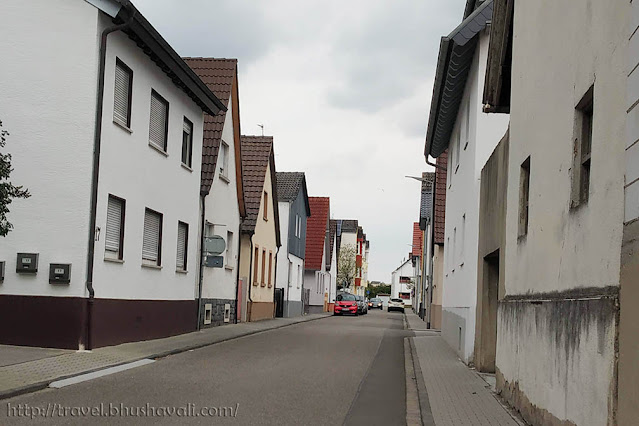
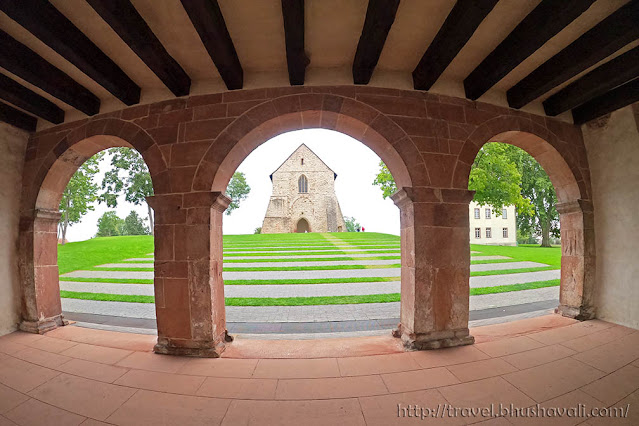
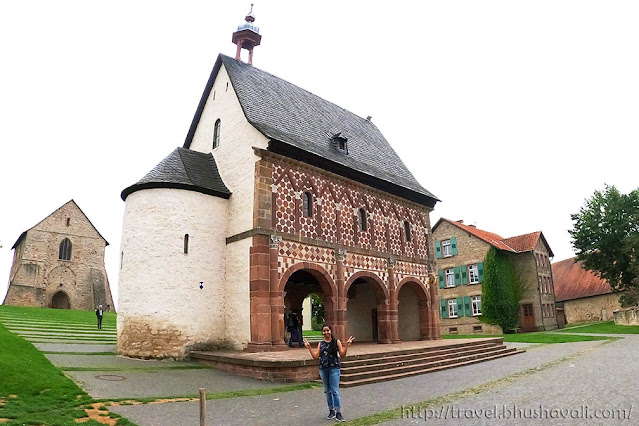



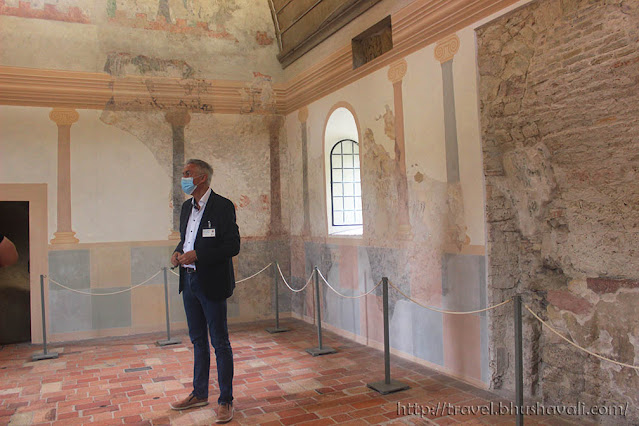

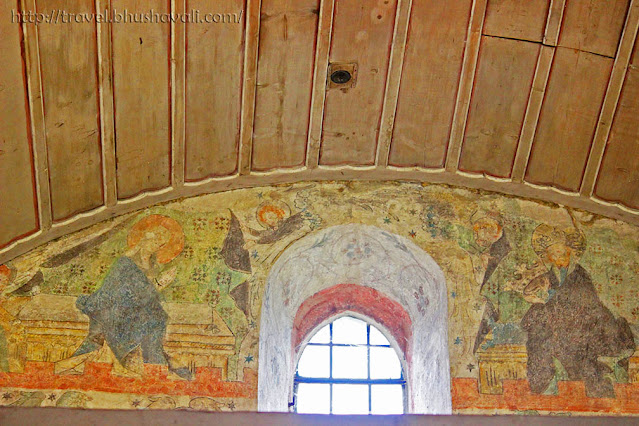










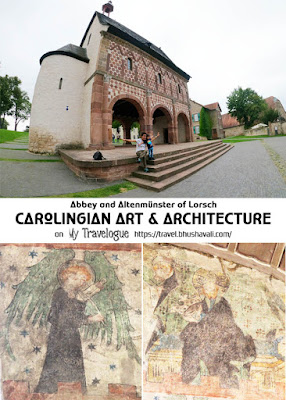
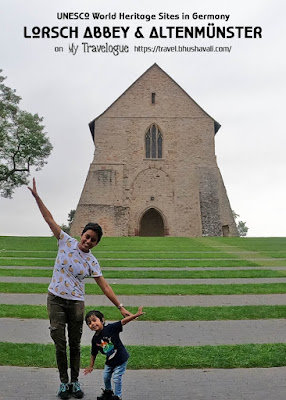




How incredible is it that a place like Lorsch exists with so much rich history in one place! I found the unknown purpose of the frescoes particularly interesting; it goes to show how many layers of history are still left to be uncovered. I loved how your pictures also depicted just that!
ReplyDeleteGlad that you wrote about Lorsch and that you visited! I feel like it is lesser known to people but it really is historically significant. I haven't had the chance to visit myself but I know that there are lots of rare architectural vestiges that are worth seeing!
ReplyDeleteI was completely unaware of Carolingian Empire. Whenever I visit your blog, I am sure I am going to learn something new, and this was about Carolingian era this time while going through Lorsch Abbey. Interesting!
ReplyDeleteThe town of Lorsch does look like a quaint one. I love churches with frescos. But fascinating to know the ones in the Lorsch Abbey may have been painted over as many as 4 times. I am always amazed at how much colour remains. It would be fun to explore the Laboratory of Experimental Archaeology with a guided tour.
ReplyDeleteHave not visited Lorsch before but it seems to be a really nice destination. Judging by your photos, it seems to be a cozy place. I really like the older architecture, feels so authentic.
ReplyDeleteI'd not heard for Lorsch Abbey but I absolutely adore reading about UNESCO sites that were not previously on my radar. I always find it amazing what researchers can uncover in frescos that have multiple layers - even that they know there are 4 layers on these frescos is incredible, nevermind that they can detail each of the layers! The entire site holds such an impressive history and I'd love the chance to visit it one day. Thanks for sharing, especially the details on how to get there.
ReplyDeleteNever knew that a place like Lorsch exists with so much rich history to look back. I love the calm of the place and the green simply marvelous. I would love to do the guided tour of Laboratory of Experimental Archaeology. That should be pretty informative.
ReplyDeleteWow! This place is charming and very rich in history. Happy to know that is suitable for a day trip and there are guided tours available. Thank you for sharing your Lorsch adventure. We hope to visit sometime in the future.
ReplyDeleteLorsch does look special. I had no idea about Bergstraße-Odenwald or the UNESCO Global Geo Park. It was nice to learn about it and the trail options it has. These Carolingian era frescoes in the first floor of King's Hall are eye-catching for sure. At the same time, its sad to know that the tour was in German language only. Your post has made me curious about Carolingian Empire. Altenmünster Abbey ruins look interesting to me.
ReplyDeleteHave not visited Lorsch before but it seems to be a really nice destination. Judging by your photos, it seems to be a cozy place. I really like the older architecture, feels so authentic. I had no idea the region of Bergstraße-Odenwald was listed as one of the UNESCO Global GeoPark, but I can see why, it is a very charming place. My favorite part would be the Königshalle - this is totally down my lane. Also, I am surprised to learn that some parts of the Monastery wall are intact and exist 'til this day. That is so rich of history.
ReplyDelete